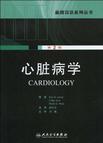心脏病学
出版时间:2010-3 出版社:人民卫生出版社 作者:赵世光 主译 页数:436 译者:赵世光
前言
早在学生时代,就渴望能有一套优质的汉英对照医学系列丛书,特别是在国外留学期间,发现国外的医学生们都有相应医学双语参考书籍,作为课堂知识的补充内容。《蓝图双语系列丛书》就是一套不可多得的医学参考书,阅读此书后受益匪浅,如获至宝。今有幸将其译成中文,愿和广大医学生及青年医师共享。本套《蓝图双语系列丛书》改编于美国Blueprints畅销丛书,该套丛书覆盖面已扩大到涵盖大部分医学临床专业和亚专业,包括急诊医学、家庭医学、神经病学、心脏病学、影像学、儿科学、妇产科学、精神病学、麻醉学、骨科学及外科学等专业。该套丛书是科学性的集中体现,无论在篇章设置、概念引用、文字表达,还是图表运用上都秉承严肃认真的科学态度,进行了合理的安排与控制。已成为美国广大医学生和住院医师获取专业知识的最佳读物,深受广大读者的喜爱,已被打造成为高质量、值得信赖的品牌丛书。本套丛书采用英中文对照的形式,在获得丰富医学知识的同时还可以提高专业英语水平。该丛书可供医学生、住院医师、全科医师学习阅读,也可作为专科医生参考用书。我们在翻译的过程中,组织了具有多年临床经验并且在美国、日本等国家留学的临床医生,经过大家共同努力,逐字逐句反复推敲,在忠实于原著的基础上,又考虑到汉语的语言习惯等因素,尽量使语言表达通俗易懂。与此同时有些部分也采用了意译的方法,更有助于读者的理解和掌握。
内容概要
本书是科学性的集中体现,无论在篇章设置、概念引用、文字表达,还是图表运用上都秉承严肃认真的科学态度,进行了合理的安排与控制。已成为美国广大医学生和住院医师获取专业知识的最佳读物,深受广大读者的喜爱,已被打造成为高质量、值得信赖的品牌书。 本书采用英中文对照的形式,在获得丰富医学知识的同时还可以提高专业英语水平,可供医学生、住院医师、全科医师学习阅读,也可作为专科医生参考用书。
作者简介
译者简介:赵世光,中共党员,主任医师,教授,博士生导师,博士后指导教师。现任哈尔滨医科大学附属第一医院神经外科主任,哈尔滨医科大学附属第一医院副院长。中华医学会神经外科分会常委,中国医师协会神经外科分会常委,中国康复医学会创伤康复专业委员会副主任委员,中国抗癌协会中国神经肿瘤学会副主任委员,黑龙江省医学会神经外科专业委员会主任委员,黑龙江省医师协会神经外科专业委员会主任委员,黑龙江省神经科学学会神经外科分会主任委员,黑龙江省博士学术研究会医学专业委员会副主任委员,国家自然科学基金评审专家,美国神经外科医师协会(AANS)会员,亚太地区神经外科学会会员,日本国际脑肿瘤病理学会会员。《Brain Tumor Pathology》国际编委,《中国神经肿瘤杂志》副主编,《中华神经外科疾病研究杂志》、《中华神经医学杂志》、《中国临床神经外科杂志》、《中国微侵袭神经外科杂志》、《中国急救医学杂志》、《中华脑血管病杂志》编委,《European Journal of Cancer》、《中华医学杂志英文版》、《中华神经外科杂志》特约审稿专家。曾获教育部提名国家科技进步二等奖、黑龙江省高校科学技术奖二等奖、黑龙江省人民政府科学技术进步二等奖、黑龙江省医药卫生科技进步一等奖、黑龙江省卫生厅科技进步一等奖等国家、省部级奖励共18项。曾承担国家973计划前期研究专项、国家自然科学基金等国家、省部级各类课题20余项。获国家发明专利4项。在国际、国内等核心期刊发表论文100余篇(其中SCI收录18篇)。
书籍目录
第一部分 病史及体格检查 第1章 病史 第2章 心血管系统的体格检查第二部分 诊断方法 第3章 心电图 第4章 应激试验 第5章 超声心动图 第6章 心脏导管术 第7章 心律失常的诊断方法 第8章 其他影像学检查方法第三部分 冠状动脉疾病 第9章 冠状动脉疾病——病理生理学 第10章 血脂异常 第11章 慢性稳定型心绞痛 第12章 不稳定型心绞痛和非ST段抬高型心肌梗死 第13章 ST段抬高型心肌梗死 第14章 心肌梗死并发症第四部分 心力衰竭 第15章 心脏血流动力学 第16章 心力衰竭的发生机制 第17章 心力衰竭的临床表现及治疗 第18章 心肌炎 第19章 心肌病第五部分 心律失常 第20章 心律失常的发生机制 第21章 快速型心律失常 第22章 缓慢型心律失常(心动过缓和心脏传导阻滞) 第23章 晕厥 第24章 心源性猝死 第25章 起搏器和植入式心脏复律除颤器第六部分 心脏瓣膜疾病 第26章 风湿热 第27章 主动脉瓣疾病 第28章 二尖瓣疾病 第29章 感染性心内膜炎 第30章 人工心脏瓣膜第七部分 心包疾病 第31章 心包炎 第32章 心包填塞 第33章 缩窄性心包炎第八部分 血管疾病 第34章 高血压 第35章 外周动脉疾病 第36章 大动脉疾病 第37章 颈动脉疾病 第38章 深静脉血栓及肺栓塞性疾病 第39章 肺动脉高压第九部分 其他重要心脏状态 第40章 术前心脏评估 第41章 先天性心脏病 第42章 妊娠与心血管疾病 第43章 外伤性心脏病 第44章 心脏肿瘤 习题 参考答案附录A:循证医学资源附录B:心电图附录C:心血管系统常用药物名词对照表
章节摘录
插图:Once stabilized, all survivors of SCD should undergo echocardiography to seek evidence of CAD or valvular heart disease and to determine the LVEE Patients with normal LV function but with risk factors for CAD should undergo diagnostic exercise stress testing. In patients with a depressed EF, cardiac catheterization may be warranted to exclude significant underlying CAD, and EPS may be indicated for risk stratification and guidance of therapy.TreatmentThe initial management of survivors of SCD is in large part supportive, with most requiring intubation and mechanical ventilation for several days. Hemodynamic lability is common, as are CHF, recurrent arrhythmias, and infection (especially aspiration pneumonia). Most survivors are neurologically impaired following the event but have neurologic recovery (albeit often incomplete recovery) over the course of several days. Hypothermic therapy has been shown to improve overall neurologic outcome following SCD and should be instituted in patients who remain unresponsive after resuscitation. Hypothermia is achieved via cooling blankets or intravascular cooling devices. The patient's temperature should be reduced to 32 to 34℃ for 24 hours, after which passive warming is allowed. Patients must be sedated, and pharmacologic paralysis is required during hypothermia to prevent shivering.The specific treatment of survivors of SCD depends on the etiology of the event. If a reversible cause is identified (e.g., medication toxicity or electrolyte abnormality), treatment involves correcting the underlying problem. However, if the patient is thought to have suffered an acute ischemic event as the basis for SCD, cardiac catheterization should be performed and percutaneous or surgical revascularization undertaken if possible. Implantation of an ICD should be strongly considered in all SCD survivors who have had a previous MI or have an underlying cardiomyopathy and who are felt to have had an arrhythmic event as the cause of SCD (see Chapter 25). These devices will monitor for and treat recurrent arrhythmias and reduce mortality in this setting. A formal EPS may be warranted in SCD survivors for whom an arrhythmic cause is not certain in order to determine the inducibility of ventricular tachyarrhythmias. Many of these patients will require treatment with an antiarrhythmic agent(such as amiodarone) and most will require implantation of an ICD. Patients with long-QT syndrome require removal of offending medications, correction of. metabolic abnormalities, and frequently ICD placement.The primary prevention of SCD is difficult because many patients do not manifest signs or symptoms that may indicate their high risk of SCD. Since most cases of SCD are due to CAD or underlying structural heart disease, screening for disease in at-risk individuals may reduce the incidence of SCD by identifying patients with predisposing conditions and allowing for adequate therapy before SCD occurs. In general, correcting, or at least improving, cardiac function in those diseases known to cause SCD can reduce its incidence.Patients with a depressed LVEF who also have non sustained VT (especially those with underlying CAD) have a significantly increased risk of developing SCD. These patients may warrant ICD placement.
编辑推荐
《心脏病学(第2版)(翻译版)》:蓝图双语系列丛书
图书封面
评论、评分、阅读与下载
用户评论 (总计13条)
- 不错的书 有利于提高专业英语 唯一不足就是介绍的有点简略 对于掌握心脏病学基本的英文单词与相关表述有帮助 对于想真正提高自己的专业知识就有点太过简单与浅薄了
- 学西医的专业英语很重要,这本书能中英对照学习专业外语。
- 很不错的双语丛书!
对学习很有帮助! - 内容很精精炼,提高专业英语必备
- 很好的一本书,内容翔实,双语的很实用。印刷的夜很好~~
- 很值得拥有啊
- 内容比形象中要好
- 还好,浅显
- 帮朋友买的~~书面有些脏,总体很不错的!内容嘛,不知道朋友满不满意!
- 还行吧 一般
- 本来以为是对照页的呢,收到才看到前面部分是英文,后面部分是汉语,对照的,不过真不错
- 比较适合复习使用,精简
- 还不错,就是中文部分一般
相关图书
- 综合汉英翻译教程
- 现代电子商务概论
- 原子及原子核物理
- 软件项目实训
- 绕月探测飞行控制
- 点钞技术与反假货币知识
- 电子对抗理论与方法
- 装饰控制
- 冲压工艺分析与模具设计方法任务驱动式教程
- 一学就会的韩国料理
- 厨房完全手册
- 世界知识年鉴2009/2010
- 大人物的小故事
- 你为什么总是完不成工作任务
- 直击韩国2009
- 大黄妙用是补药,人参误用是毒药
- 大同解放
- 南通解放
- 哈尔滨解放(上下)
- 新编公文写作基本知识与范例
- 新编党政机关公文写作指导与规范处理全书
- 国学经典速读
- 中华人民共和国全国人民代表大会和地方各级人民代表大会选举法解读
- 我们应该怎样书写忠诚(上下)
- 2010年国家司法考试法律法规汇编(套装共6册)
